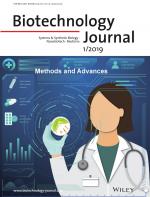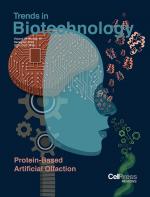Boronic acid-modified magnetic materials for antibody purification
- Citation:
- Dhadge, VL, Hussain A, Azevedo AM, Aires-Barros MR, Roque ACA. 2014. Boronic acid-modified magnetic materials for antibody purification. J. R. Soc. Interface. 11(91):20130875.
Abstract:
Aminophenyl boronic acids can form reversible covalent ester interactions with cis-diol-containing molecules, serving as a selective tool for binding glycoproteins as antibody molecules that possess oligosaccharides in both the Fv and Fc regions. In this study, amino phenyl boronic acid (APBA) magnetic particles (MPs) were applied for the magnetic separation of antibody molecules. Iron oxide MPs were firstly coated with dextran to avoid non-specific binding and then with 3-glycidyloxypropyl trimethoxysilane to allow further covalent coupling of APBA (APBA_MP). When contacted with pure protein solutions of human IgG (hIgG) and bovine serum albumin (BSA), APBA_MP bound 170 ± 10 mg hIgG g−1 MP and eluted 160 ± 5 mg hIgG g−1 MP, while binding only 15 ± 5 mg BSA g−1 MP. The affinity constant for the interaction between hIgG and APBA_MP was estimated as 4.9 × 105 M−1 (Ka) with a theoretical maximum capacity of 492 mg hIgG adsorbed g−1 MP (Qmax), whereas control particles bound a negligible amount of hIgG and presented an estimated theoretical maximum capacity of 3.1 mg hIgG adsorbed g−1 MP (Qmax). APBA_MPs were also tested for antibody purification directly from CHO cell supernatants. The particles were able to bind 98% of IgG loaded and to recover 95% of pure IgG (purity greater than 98%) at extremely mild conditions.







